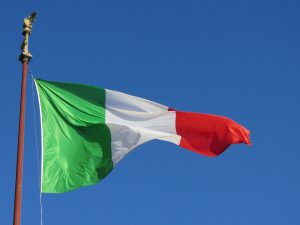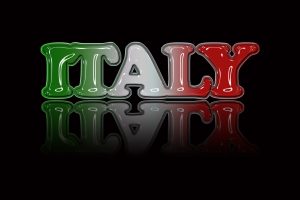
The Italian flag, known as “Il Tricolore,” is one of the most recognizable flags in the world. Its design is simple yet powerful, featuring three vertical stripes of green, white, and red. However, behind this design lies a rich history and symbolism that has made the Italian flag an important part of the country’s identity.
The origin of the Italian flag dates back to the 18th century, during the period of the Risorgimento, a movement for Italian unification. At the time, Italy was divided into several states and territories, each with its own flag and symbols. The idea of a unified Italy had been a long-held dream among many intellectuals and politicians, and the need for a national symbol became increasingly urgent.
In 1796, a young general named Napoleon Bonaparte arrived in Italy, bringing with him the ideals of the French Revolution. He established the Cisalpine Republic, a state in northern Italy that adopted a flag with three horizontal stripes of green, white, and red. This flag is considered the precursor to the modern Italian flag, and it inspired many Italian nationalists to adopt similar designs.
The first official use of the Tricolore as a national symbol came in 1848, during the First Italian War of Independence. The flag was raised by revolutionaries in the city of Milan, and it soon became a symbol of the struggle for Italian unification. The Tricolore was later adopted as the national flag of Italy when the country was finally unified in 1861.
The colors of the Italian flag have their own symbolic meaning. Green represents hope, white represents faith, and red represents charity. These colors have been associated with Italy for centuries, appearing in the coat of arms of various Italian states and dynasties.
Interestingly, the exact shades of green, white, and red used in the Tricolore were not specified until 2003, when the Italian government established official color standards. The green is Pantone 355 C, the white is Pantone White, and the red is Pantone 186 C.
The Italian flag has also been the subject of various myths and legends. One popular legend claims that the Tricolore was inspired by the green, white, and red bands of pasta in a dish called “alla tricolore,” which was served to Italian revolutionaries. While this story is certainly appealing, it is not backed up by any historical evidence.
Another legend claims that the Tricolore was designed by Napoleon himself, who was said to have been impressed by the simplicity and elegance of the flag. However, this story is also unlikely, as the Cisalpine Republic was established several years before Napoleon’s arrival in Italy.
Regardless of its origins, the Italian flag has become an important symbol of Italian identity and patriotism. It is flown at government buildings, schools, and public events throughout the country, and it is often displayed by Italians living abroad.
The Tricolore has also inspired countless works of art, literature, and music. The Italian national anthem, “Il Canto degli Italiani,” was written during the Risorgimento and includes references to the flag and its colors.
In conclusion, the Italian flag is more than just a simple design. It represents centuries of Italian history, culture, and identity, and it continues to inspire Italians around the world. Whether displayed proudly on a flagpole or worn as a symbol of national pride, the Tricolore will always be a powerful symbol of Italy and its people.

